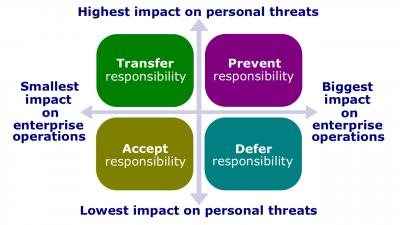Difference between revisions of "Defensive-behavior technique"
(Created page with "400px|thumb|right|[[Defensive-behavior techniques]]A defensive-behavior technique (hereinafter, the ''Technique'') is an established way o...") |
(→Related coursework) |
||
| Line 6: | Line 6: | ||
*[[Decision-avoidance tactic]]. A [[change-avoidance technique]] based on the practice of acting in ways to protect one's self-interest during change by guarding information or other resources. | *[[Decision-avoidance tactic]]. A [[change-avoidance technique]] based on the practice of acting in ways to protect one's self-interest during change by guarding information or other resources. | ||
| − | ==Related | + | ==Related lectures== |
*[[Talent Management Quarter]]. | *[[Talent Management Quarter]]. | ||
[[Category: Septem Artes Administrativi]][[Category: Articles]] | [[Category: Septem Artes Administrativi]][[Category: Articles]] | ||
Latest revision as of 15:26, 4 January 2019
A defensive-behavior technique (hereinafter, the Technique) is an established way of avoiding an action, blame, change, and/or decision.
Types
- Playing safe. A blame-avoidance technique based on the practice of evading situations that may reflect unfavorably. It includes taking on only projects with a high probability of success, having risky decisions approved by superiors, qualifying expressions of judgment, and taking neutral positions in conflicts.
- Self-protection. A change-avoidance technique based on the practice of acting in ways to protect one's self-interest during change by guarding information or other resources.
- Decision-avoidance tactic. A change-avoidance technique based on the practice of acting in ways to protect one's self-interest during change by guarding information or other resources.
